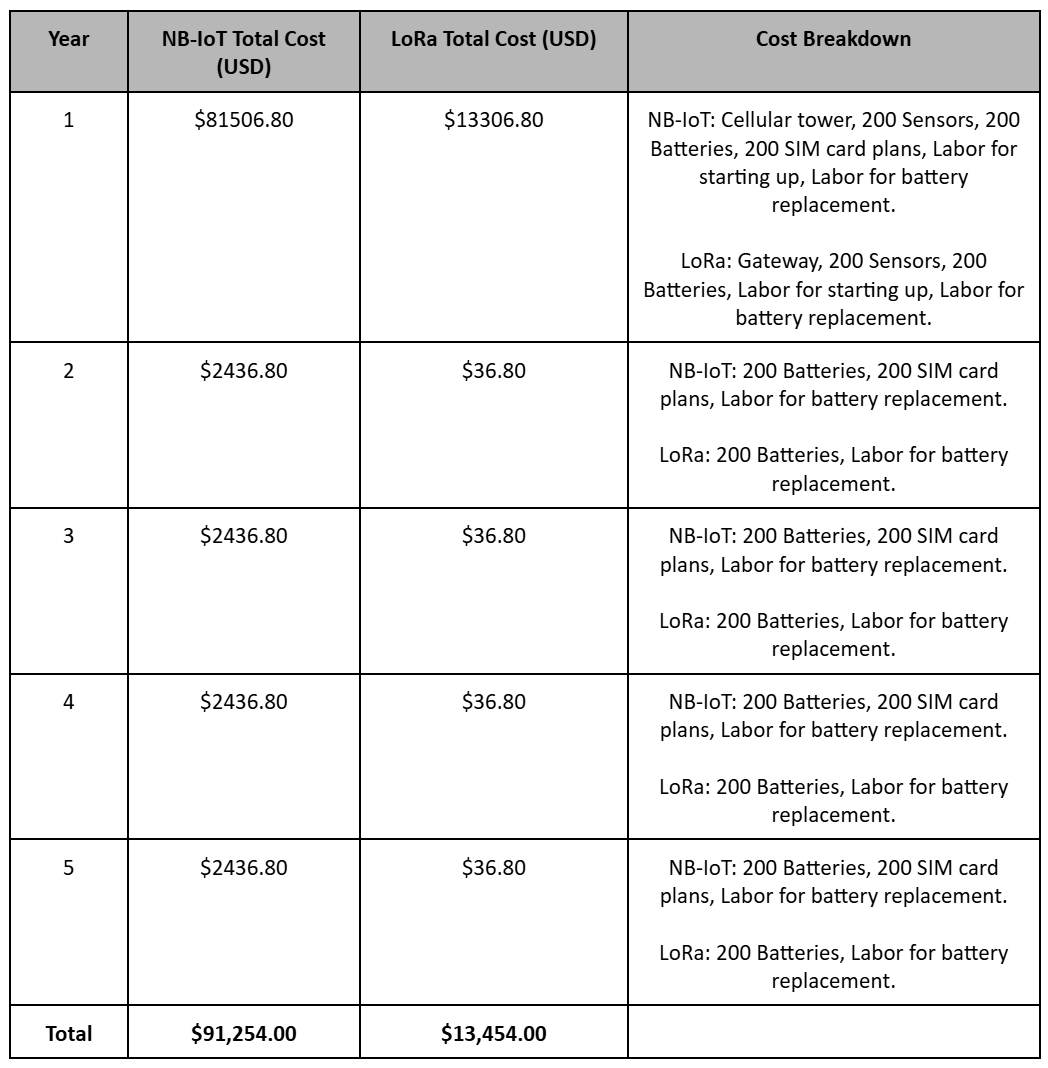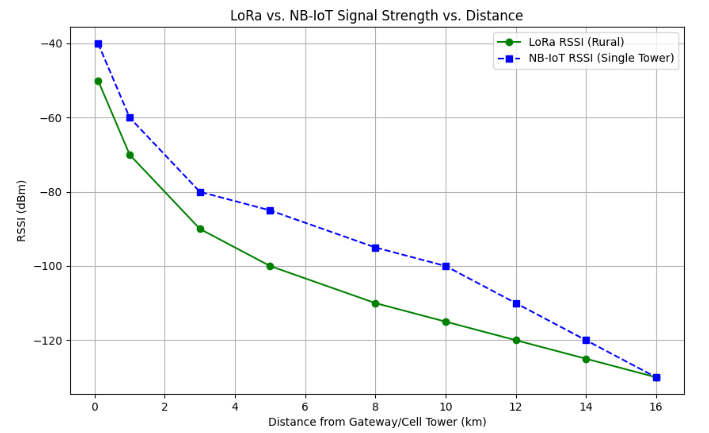As part of my Wireless Network Systems class, I designed a smart farming solution for a 40-acre plot of land in Malaysia. The goal was to modernize traditional farming methods using wireless sensors to monitor soil moisture and nutrient levels (nitrogen, phosphorus, potassium). Each sensor transmits 11 bytes of data twice a day—at 6am and 6pm—and undergoes firmware updates three times a year.
Technical Design and Deployment Strategy
I evaluated various wireless technologies including NB-IoT, 802.15.4, WiFi, and LoRa. After comparing factors like signal range, power consumption, and infrastructure cost, LoRa emerged as the most practical solution. I proposed deploying 200 low-power LoRa sensors strategically across the farm, all connected to a single LoRaWAN gateway located at the center of the field. Sensors would operate on a 125 kHz bandwidth with a spreading factor of 8, balancing range and energy efficiency.
Sensors were designed to be battery-operated using 3.6V AA lithium-thionyl chloride batteries, with a projected lifetime of 21 to 195 years under ideal conditions. I also considered factors like Malaysia’s high humidity and heat, so outdoor durability and data privacy were addressed in the final deployment plan.
Energy Modeling and Wireless Evaluation
To validate the choice of LoRa, I performed detailed energy modeling using datasheets from the Semtech SX1262 (LoRa) and u-blox SARA-R510S (NB-IoT) modules. I calculated yearly energy consumption across best and worst-case transmission scenarios, factoring in deep sleep, cyclic idle, and active transmission states.
I compared total energy consumption and battery lifetimes for both technologies:
 This chart compares 5-year deployment costs of NB-IoT vs. LoRa. NB-IoT requires over $91,000 due to SIM plans and cellular tower setup, while LoRa remains below $14,000, thanks to its simpler infrastructure and lower power requirements.
This chart compares 5-year deployment costs of NB-IoT vs. LoRa. NB-IoT requires over $91,000 due to SIM plans and cellular tower setup, while LoRa remains below $14,000, thanks to its simpler infrastructure and lower power requirements.
I also plotted signal strength over distance to compare LoRa and NB-IoT in a rural deployment scenario:
 LoRa provides stable long-range coverage, making it suitable for rural environments with limited infrastructure. NB-IoT requires nearby cellular towers and is more power-intensive over long distances.
LoRa provides stable long-range coverage, making it suitable for rural environments with limited infrastructure. NB-IoT requires nearby cellular towers and is more power-intensive over long distances.
Conclusion & Learnings
Through this project, I learned how to apply wireless systems knowledge to a real-world deployment. I developed a full-stack understanding from sensor architecture and wireless protocols to cost modeling and rural deployment constraints. The project highlighted the importance of energy efficiency and infrastructure scalability in designing IoT systems for agriculture and remote monitoring. Ultimately, LoRa proved to be the most viable solution to transform the traditional farm into a modern smart farming system.
Please contact me to learn more of the analysis done for this project.

